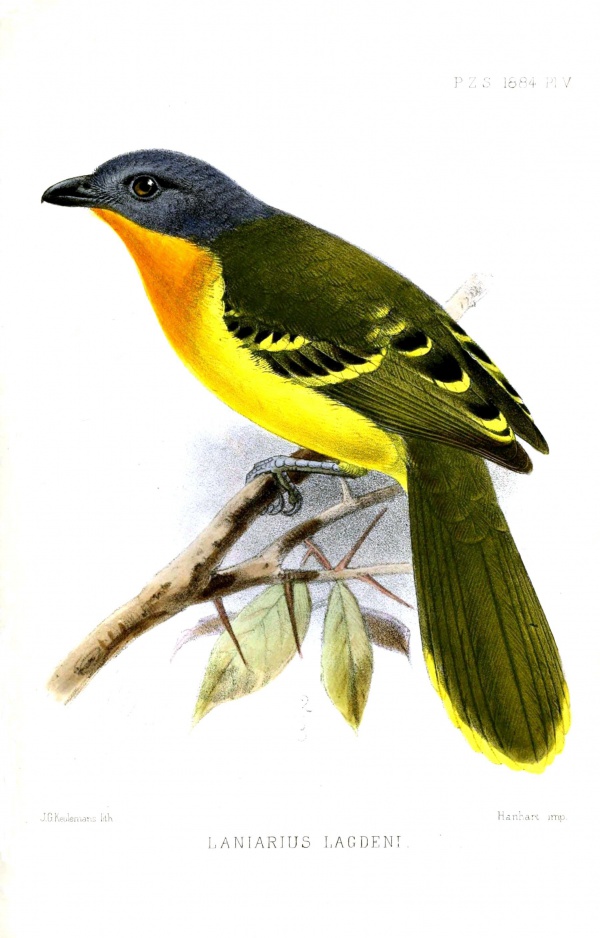Facts About Lagden's bushshrike
Lagden's bushshrike, a colorful bird native to Africa, is celebrated for its striking appearance and distinctive calls. Belonging to the bushshrike family, this bird is observed in two main regions: West Africa and Central Africa, each hosting a different subspecies.
First described by Richard Bowdler Sharpe in 1884, the species was named Laniarius lagdeni in honor of Sir Godfrey Yeatman Lagden. The two recognized subspecies are Malaconotus lagdeni lagdeni in West Africa and Malaconotus lagdeni centralis in Central Africa.
In terms of appearance, Lagden's bushshrike measures about 23 cm in length with a robust build. Its plumage includes olive green upperparts, a grey head, and vibrant yellow or orange-yellow underparts. Males and females share similar plumage, featuring a heavy black bill and bluish-grey legs, whereas juveniles exhibit duller colors. A distinguishing characteristic from the fiery-breasted bushshrike is Lagden's bushshrike's less red breast and darker head.
Regarding its calls, Lagden's bushshrike produces a "hoop hoop" or "toot toot" sound, occasionally described as a "bell note" call. It primarily hunts for large insects, arthropods, and small vertebrates in the forest canopy.
Lagden's bushshrike prefers subtropical or tropical moist lowland forests in West Africa up to 700 meters in elevation. In countries like Rwanda, Uganda, and the Democratic Republic of Congo, it resides in montane forests at elevations between 2100 and 2800 meters. Unfortunately, due to habitat loss, this species is classified as "Near Threatened" on the IUCN Red List, with its population declining. Despite its rarity, sightings have been recorded in locations such as Kyabobo National Park.

 Mali
Mali